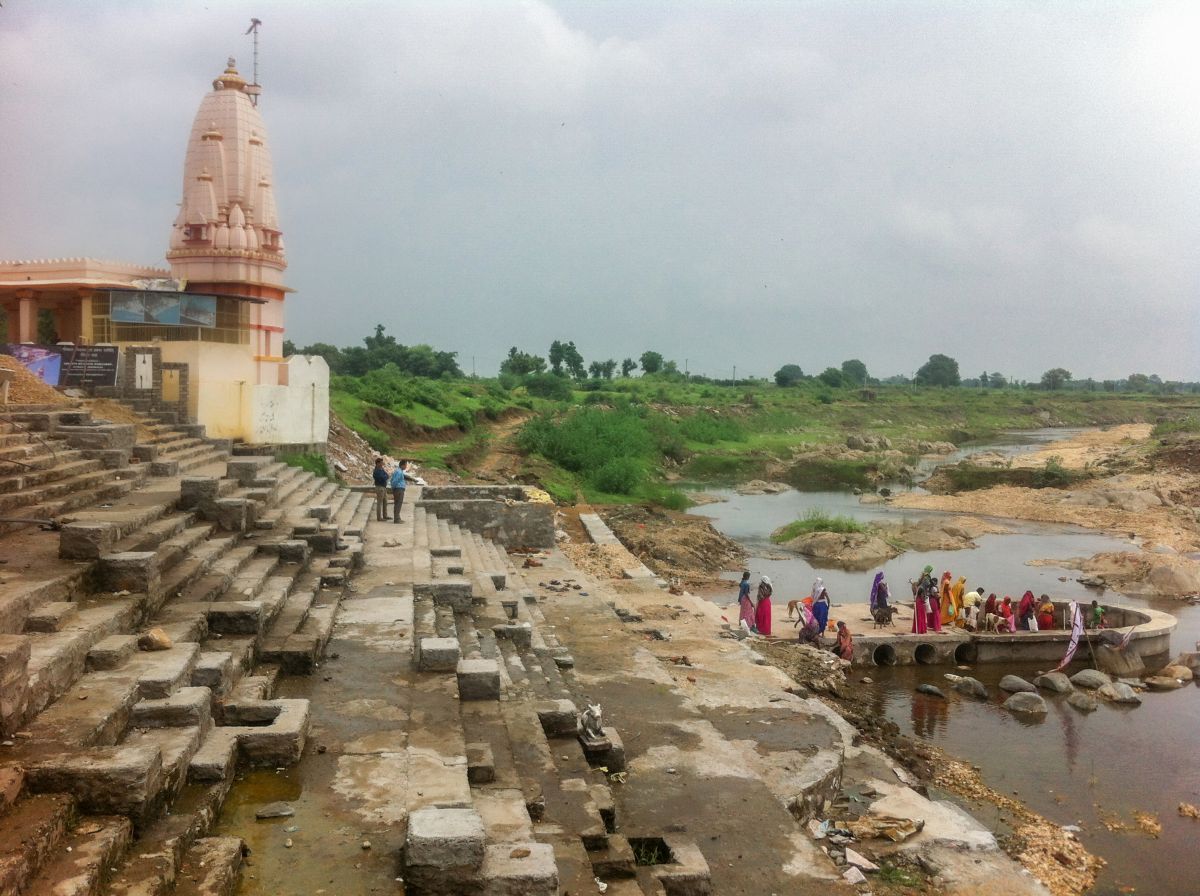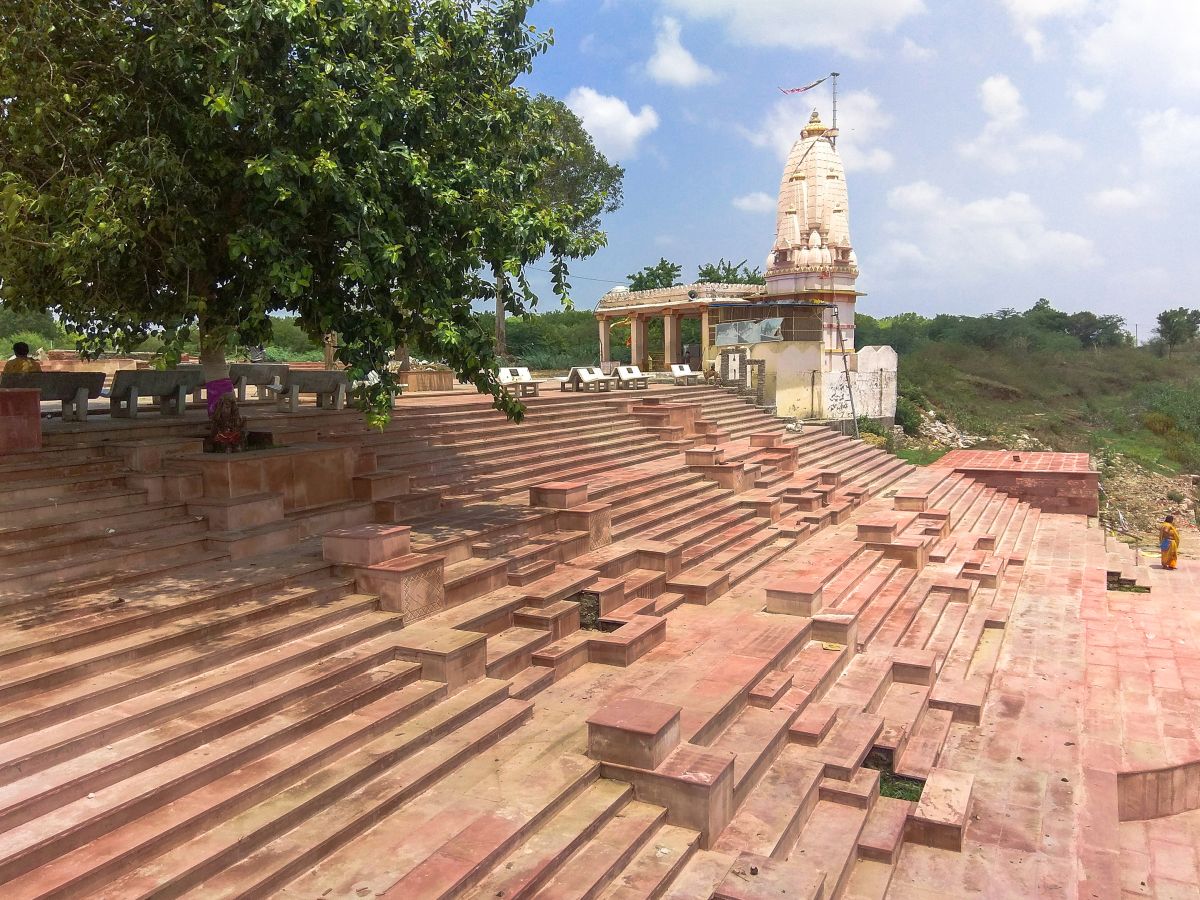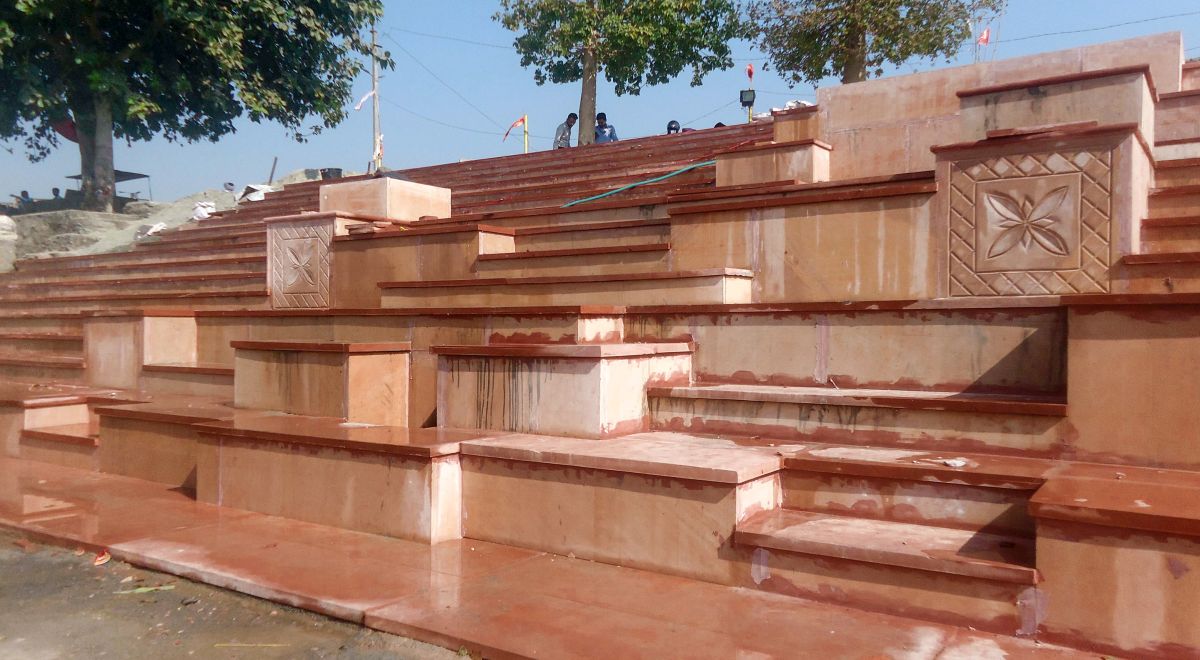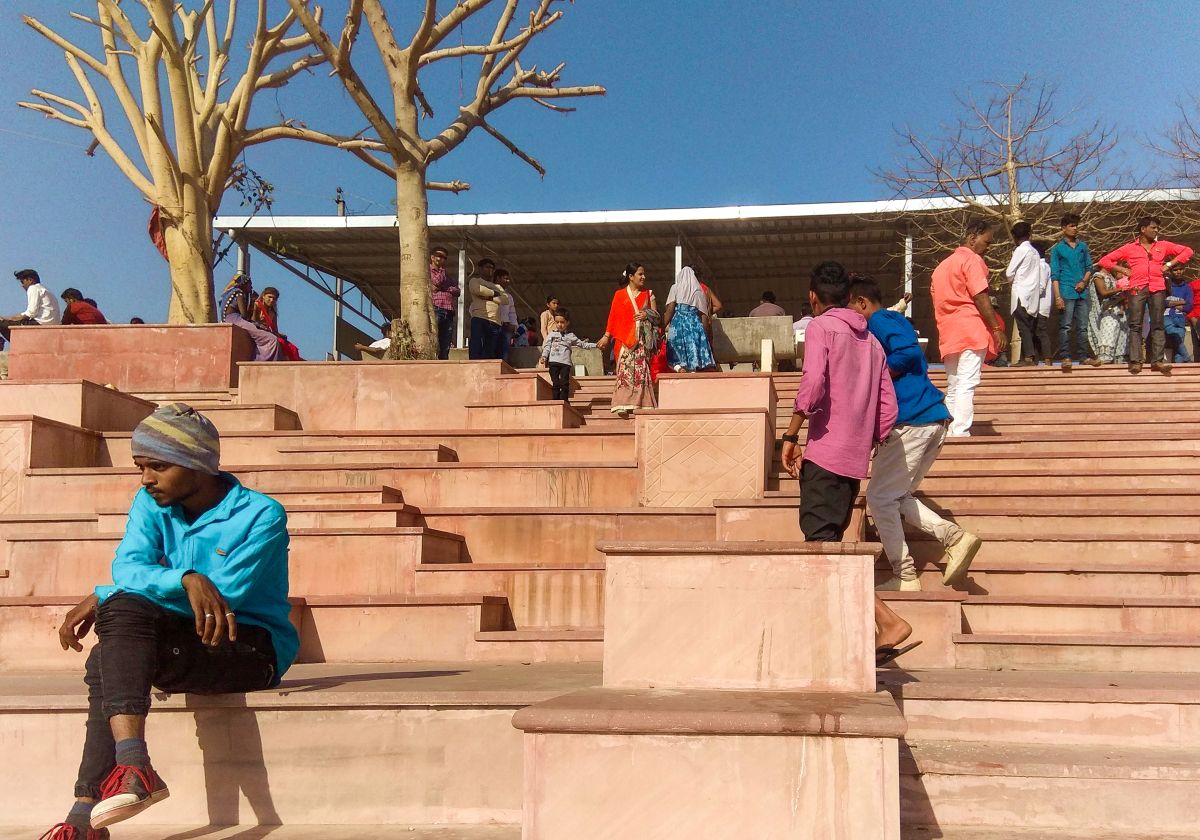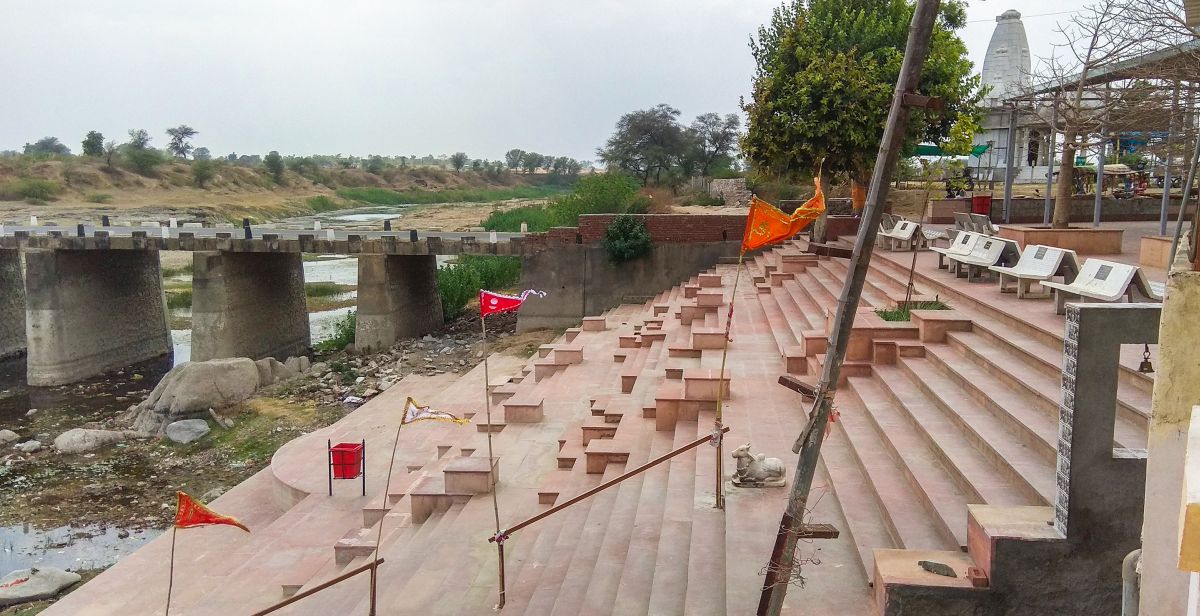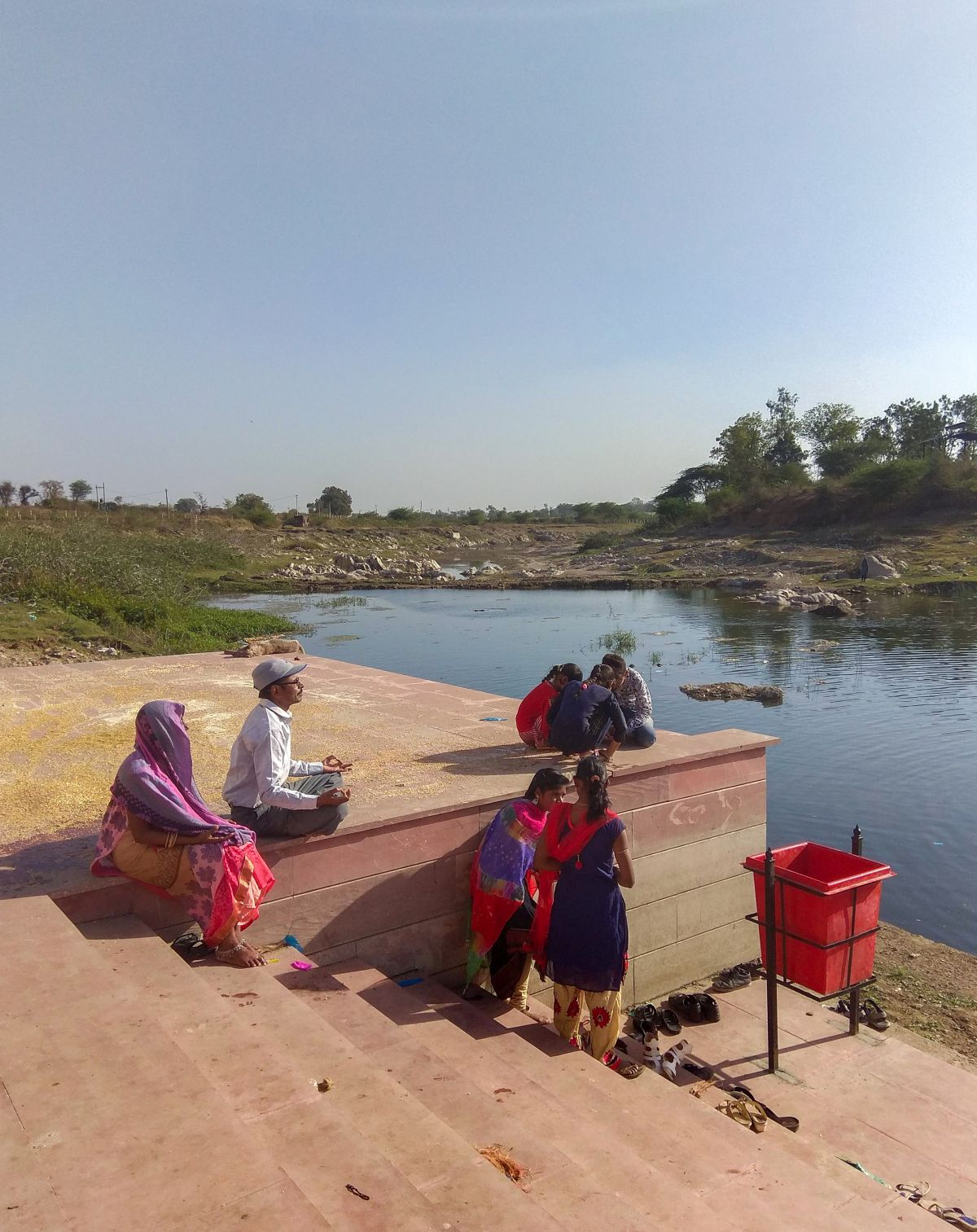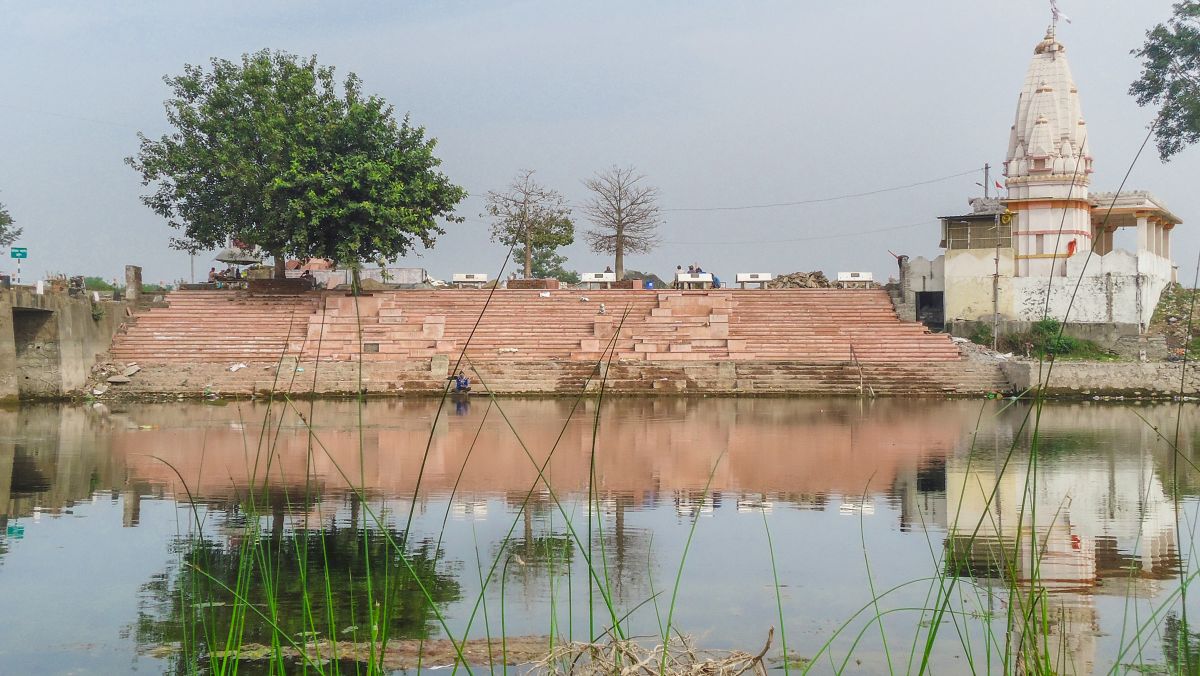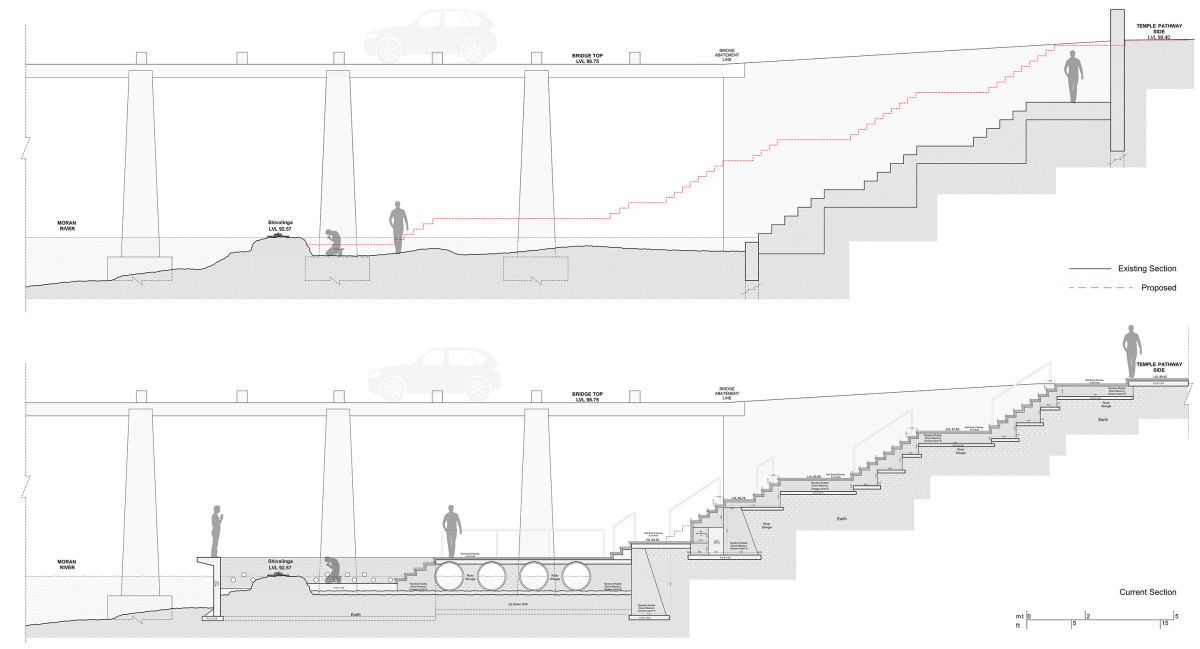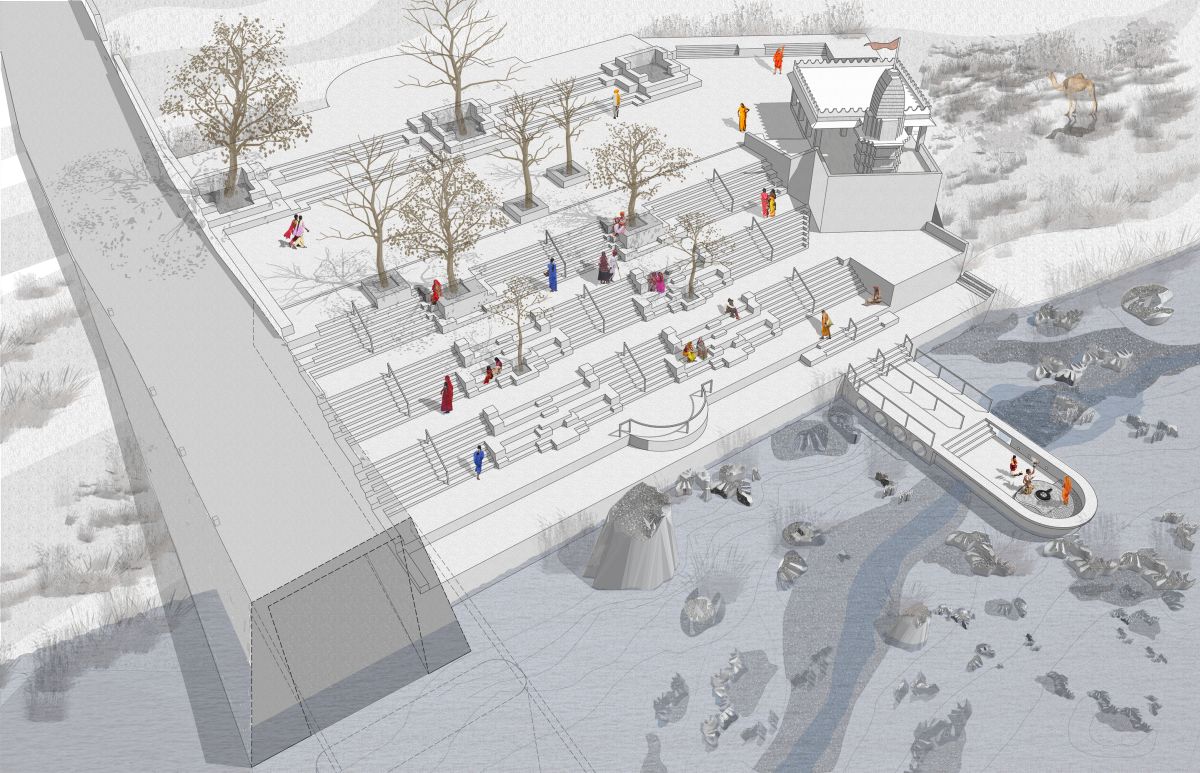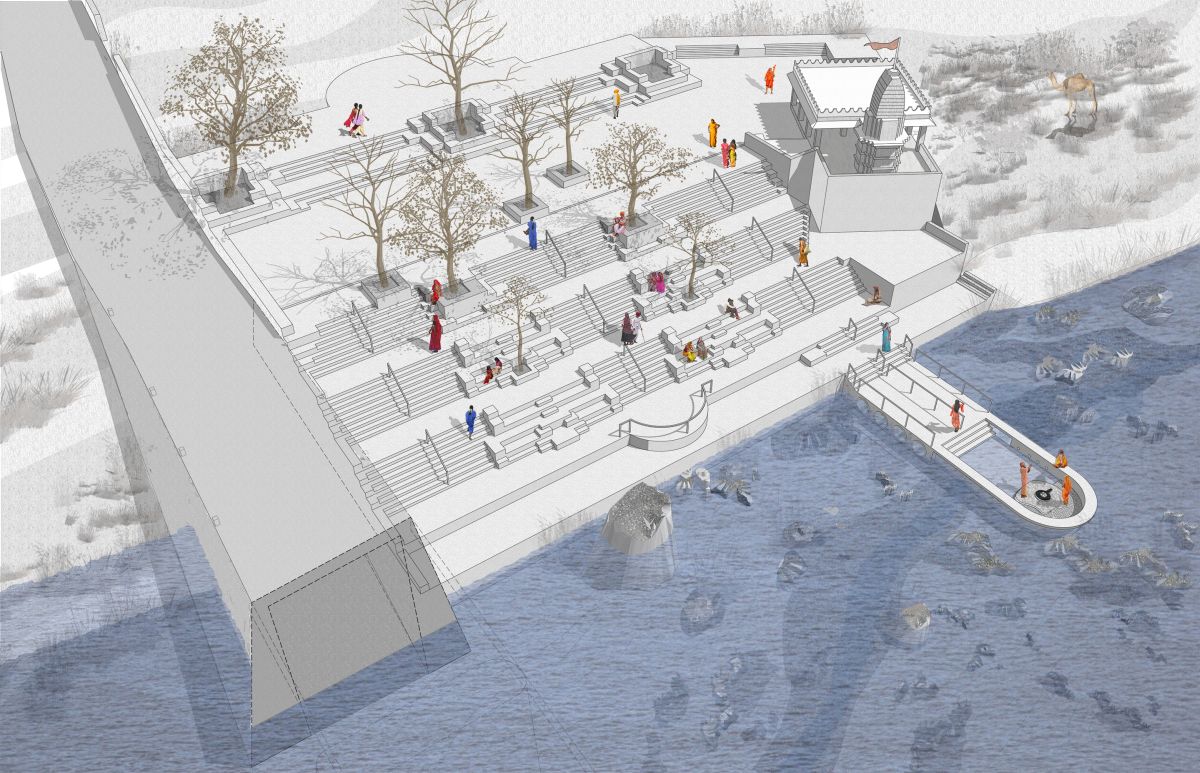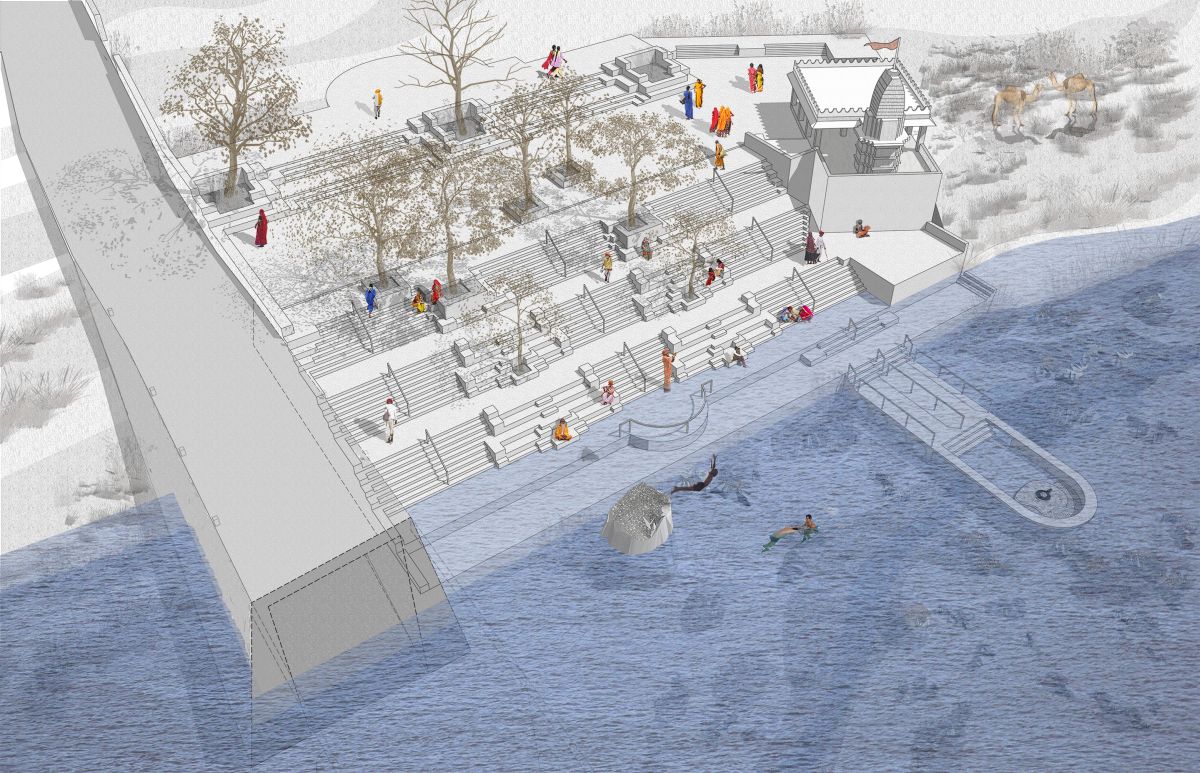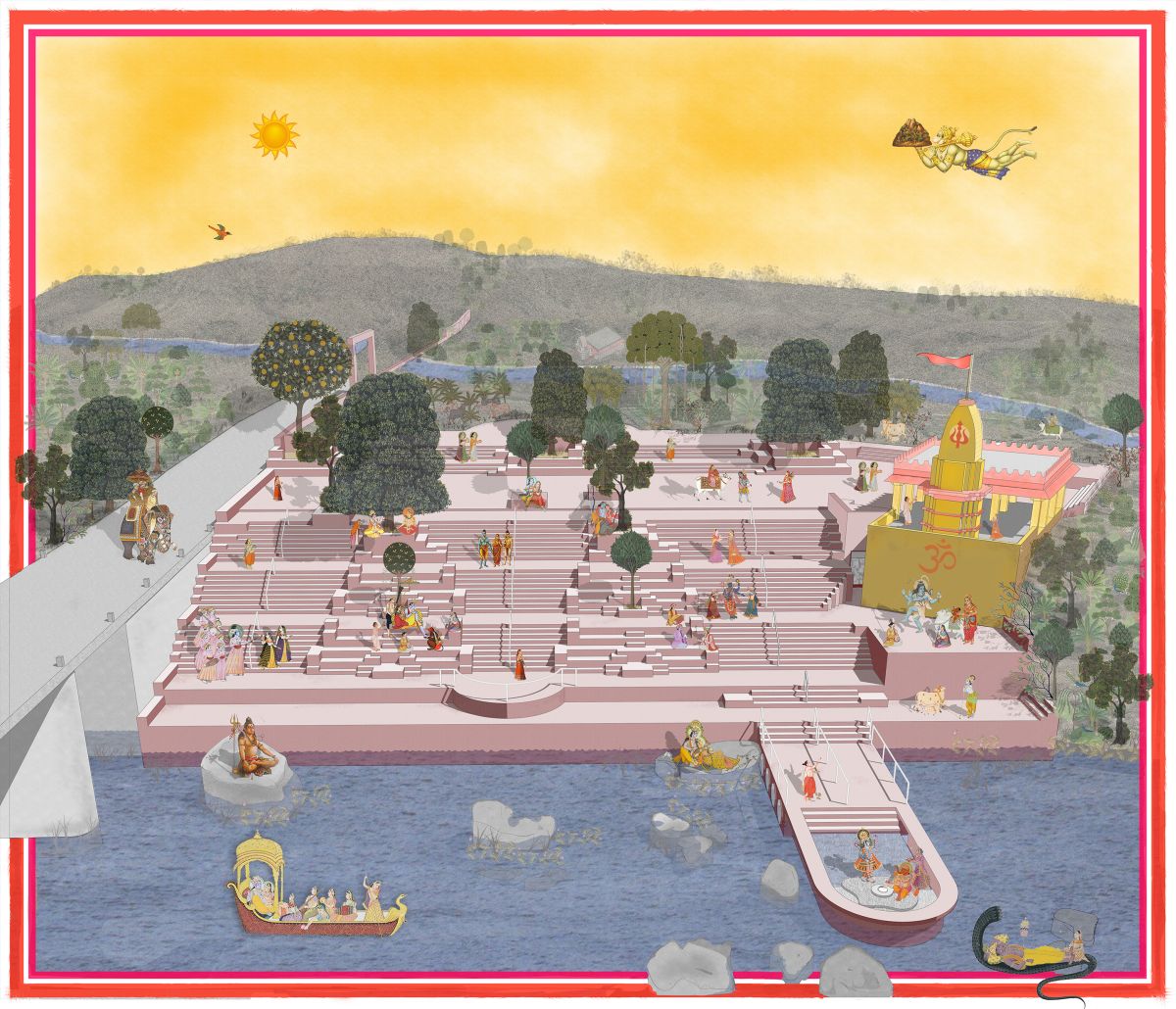The brief for this project largely emerges from the historical and socio-cultural context of the Vagad region in southern Rajasthan. Goreshwar Mahadev (Shiva temple), a temple precinct on the banks of Moran river, has been one of the major centers of faith for the locals. The main Shiva temple dates back to the 12th century. A unique characteristic of this precinct is the ‘Shivling’ situated on the Moran river bed, 6.5 meters below the road level. Today on Mondays, more than 2000 devotees from the surrounding villages come to the river bed to offer prayers.
The need for the project was raised with a concern to bring the devotees safely to the river bed. The design revolves around basic ideas of creating an experiential journey from the upper level to the river bed, with pause points to encourage social and environmental interactions. The space provides a continuity between the past and present, with the use of local materials and traditional ideas of building and design.
The process of construction begins with cleaning and silting of the river. It is found that the Shivling sat on a huge river bed rock which must not be damaged to maintain the authenticity and integrity of the Shivling.
A concrete base slab constructed around the Shivling, is made heavy, acting as a foundation to sustain the frequent flooding of the river. A semi-circular, wide platform is built over a 9” thick, low height, concrete protection wall, allowing the devotees to walk and perform the rites safely while having an unobstructed view of the river. The construction of a submersible causeway at the lower level, and holes at the bottom of the protection wall, help maintain the natural flow of the river, respecting the ecology inside the river.
The transition from the land to water is covered with steps, which is an important part of Indian traditional architecture, as seen in the step wells of Rajasthan and Gujarat or on the ghats of Banaras. The interaction between people and the water due to the changing water levels gives numerous opportunities of creating various pause points on the steps through platforms and ‘otlas’ round trees or creating patterns in steps that become activity generators.
The socio-cultural strategy for the project was the involvement of traditional craftsmen and techniques which helped resolve fundamental issues of cost (funding from the Goreshwar Vikas Trust), material procurement and project duration, and also brought in a sense of belonging among the locals. The design is an attempt at making a “place” or a “space” that is inclusive and respects the history as well as aspirations of the end users. (Text-Pankti Pandya)
Drawings –
Animations –
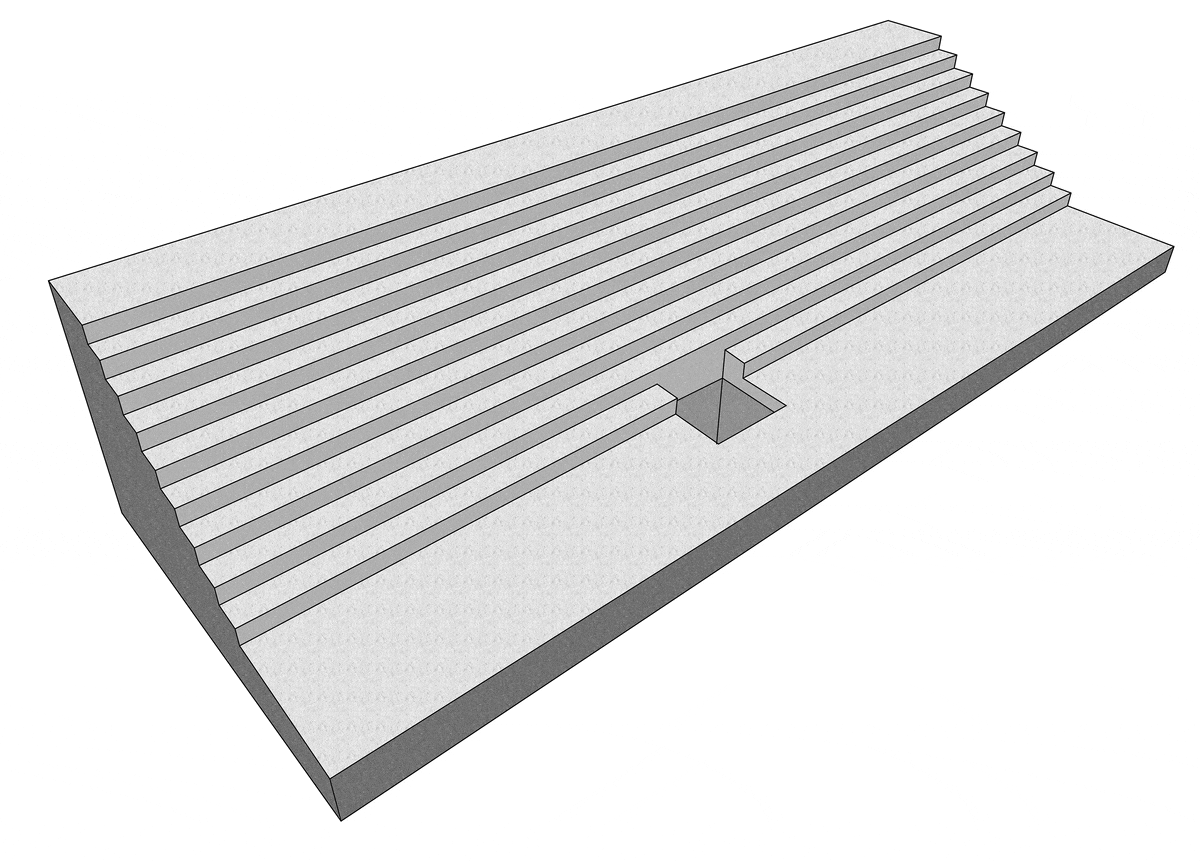
Project Facts –
Project Name: Goreshwar Moran River Front
Office Name: Impasto Building Workshop
Firm Location: Ahmedabad, India
Completion Year: 2019
Gross Built Area (m2/ ft2): 3000 m2
Project location: Goreshwar Mahadev Mandir, Village- Dibra Bada, Tehsil- Sagwara, District- Dungarpur , State- Rajasthan (India)
Principle Architect: Kanishka Suthar
Design Team: Manohar Ji Suthar, Jerome Justin, Ankush Gupta, Raasul Rajeev, kanishka Suthar
Project Engineer: Manohar Ji Suthar
Project Supervisor: Devsankar Ji Suthar
Construction Team: Rupabhai, Ishwarbhai, Pratik Suthar, Mukeshbhai, Lalji Kaka
Photo Credits: impasto building workshop








